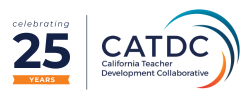Why Restorative Justice Practices and Community Matter More than Ever in the Era of School Shootings

This morning, like every morning when I park in a lot of the middle school where I am an assistant principal, questions flood my head in anticipation of the coming day. Which students will need academic support and interventions today? How can I best coach that teacher with her long-term lesson planning to increase her students’ learning? On which students should I perform an in-class observation to offer extra feedback? Never in all my years as an educator did I consider that a new question should now come to mind: How do we as a school keep our students safe from gun violence?
As disheartening as that question is, I find it equally alarming that for many the knee-jerk reaction is to create a system where they judge their students and the potential level of threat they warrant. I instead would like to seek alternatives to creating communities laced with fear. It is natural for a student, parent, or teacher to feel fearful in the wake of senseless school shootings, but I personally cannot let that fear govern my bedrock belief that all students come to school to seek personal betterment and belonging.
A sociological article that I read examining the recent wave of school shootings asked the important question of why these shootings are happening. It also asked the reader to explore what teachers’ and schools’ responses to children are. The article opined that “how teachers understand the children and youth they teach has important educational consequences. Are students budding citizens or future workers? Are they plants to nourish or clay to mold?” The article mentioned that some schools are now undergoing staff trainings on “threat assessment,” or telling teachers what troubling indicators to look for in their students that might be the telltale sign that a student is a threat. I have to believe that there is a better way of preventing violence without dehumanizing our students and viewing them as warning indicators and statistics.
I am not naive to believe that there is a quick fix or a magical solution for eradicating violence in our schools, however, there are several approaches that I am committed to because they not only make schools safer places to be, they also make schools better places for students to grow and thrive.
Building Community
The first approach is ensuring that schools are communities of caring: a school should be a place where every child feels connected to at least one adult who they know will care for their basic needs and advocate for them. In order to make this a priority at our school in the days after the major shootings, we designated a professional development session where we posted every student from our school’s name on the wall. Teachers silently walked around marking up the pages with two different color pens. One color ink indicated consistent positive interactions with the student. A second color indicated negative interactions with the student. When all of the teachers and staff had circulated around the room and identified their relationships with the students, we highlighted any student who had no positive markings or no markings at all by their names. We then had a teacher step up to volunteer to become an advocate for the neglected student. We, as a team, are committed to the idea that every student should have a positive interaction with an adult at school every day. And I know some students are challenging, and take a little bit more patience but I have seen time and time again how this demonstration of care changes student’s perspectives and motivations.
Restorative Justice Circles
Our school champions another approach to making our community safe for all members through the faithful implementation of restorative justice circles. These convenings are based on the ideology that through safe and honest communication our staff can foster conversations among students, teachers, and community members to repair harm done and to build understanding among the participants. In a circle, there is no hierarchy, and the facilitator supports participants in speaking about how they feel and their motivations, and how they can repair broken trust or relationships. Some construe circles as “touch-feely,” ineffective, or not “true justice.” I’ve heard the critiques before, but believe that they come from a lack of understanding of the process. Students still receive consequences for breaking the rules; the circles merely supplement the discipline process by going to the root causes of altercations and allowing students to rebuild trust through healthy communication patterns. Having students and adults meet in places of understanding and strengthen their relationships is imperative to making a school a functional place of learning, since as educational theorist Maria Montesorri stated, “learning is a social act.”
Our amazing counselor, Alyssa Campos, is committed to training our staff in running these circles, and the results that she has collected speak for themselves. She reports that over a third of the circles that are held are requested by our students. Additionally, in the follow-up survey she gives students who participated in a circle, 96.6% percent report that they feel that the circle made the situation better. She says that, “One of the greatest benefits of circles is helping students learn how to communicate effectively and manage their emotional responses. I always tell students they are entitled to how they are feeling, but they must communicate those emotions in a way that is respectful and helps the other participants understand why they are feeling that way. I will guide them in the way they speak to one another so that conversations can occur in a manner that helps everyone to feel safe and valued. This helps students who may otherwise act out to express their emotions in a way that is constructive and moves them toward solving the problem. I also feel that circles have helped to foster empathy.”
In addition to fostering empathy, circles have a larger impact on our school’s culture and level of safety. Ms. Campos agrees stating, “Restorative practices and circles make our community safer by helping staff and students connect and build relationships with one another. Students who feel connected at school are less likely to act out negatively or violently. Further, circles give students an outlet to express their feelings in a way that is effective and positive.”
I am proud that restorative justice circles and intentional planning of professional development focused on supporting students’ socio-emotional needs are two parts of my school’s core values. By consciously thinking about how to value every community member, we create a climate of caring that is intrinsic to shaping whole and functioning of young humans. I encourage you to think about the practices in place at your school and to uncover how you might increase your own community of caring.
 Miriam Singer: Miriam Singer is the Assistant Principal of Curriculum and Instruction at The School of Arts & Enterprise in Pomona, CA. She supervises the instructional program for this 6-12th grade state authorized charter school. Miriam studied education at UC Berkeley and Harvard University and has no greater passion than coaching teachers on best teaching practices to help them bring learning alive. Previously, she was the Director of Curriculum at Bridges Academy, an independent school for twice-exceptional youth in Studio City, CA. Miriam also writes a teacher support blog; you can join her international teacher community and read her teacher tips at www.edcouragementor.com.
Miriam Singer: Miriam Singer is the Assistant Principal of Curriculum and Instruction at The School of Arts & Enterprise in Pomona, CA. She supervises the instructional program for this 6-12th grade state authorized charter school. Miriam studied education at UC Berkeley and Harvard University and has no greater passion than coaching teachers on best teaching practices to help them bring learning alive. Previously, she was the Director of Curriculum at Bridges Academy, an independent school for twice-exceptional youth in Studio City, CA. Miriam also writes a teacher support blog; you can join her international teacher community and read her teacher tips at www.edcouragementor.com.
